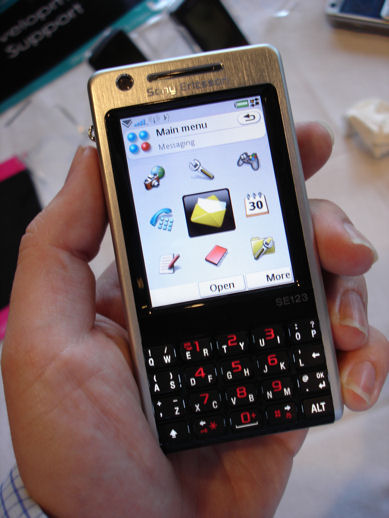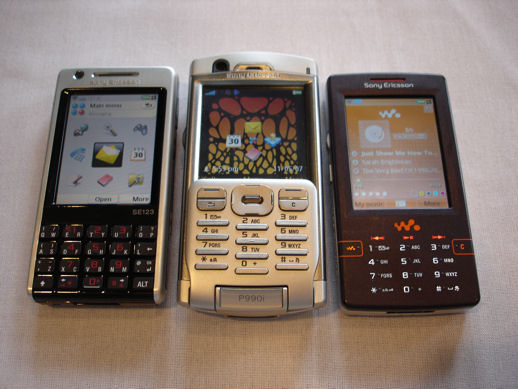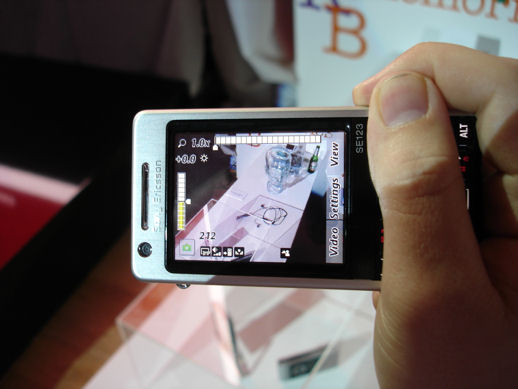Sony Ericsson announced the latest in its smartphone line up - the Sony Ericsson P1i. The P1i is a touchscreen smartphone with a 3.2 megapixel camera, Bluetooth 2.0, tri-band GSM (900/1800/1900), and WiFi connectivity.

Beneath the 2.6 inch screen is a QWERTY keyboard . Rather than a key per letter as is the norm with thumb keyboards, the P1i innovates the design with each key serves two letters, with the letter entered dictated by the side of the key you press. This allows the overall size of the keyboard to be slimmed down, while maintaining good sized keys and thus giving a more pocketable, narrower phone.
Smaller size
The familiar Sony Ericsson hand writing recognition input option is present for those who do not want to use the keyboard. Both keyboard and pen input support the excellent predictive input software which can speed up input by about 20%.
The main consequence of the smaller form factor is a significant reduction in the overall size of the P1i at 106 x 55 x 17 mm and 124g, a lot features have been packed into a small space. Most of the size reduction has been achieved by making the phone much slimmer.

The P1i, P990 and W950i compared. The reduced size of the P1i compared to the P990 is clearly evident here.
Upgraded Ram
The most welcome upgrade for the P1i is the addition of an extra 64 MB of RAM. The earlier UIQ 3 devices each had 64 MB of RAM, the P1i has 128 MB. The immediate consequence of this is to ease multi-tasking - fewer applications will shut down in the background due to low memory (RAM). Larger memory makes up to 15 applications running at the same time on the P1i possible and switching between applications will be faster. Perhaps even more welcome will be an end to the 'out of memory' errors that occurred when running RAM hungry applications such as the Opera browser. The extra RAM also, seems to have speeded up general phone operation, moving through menus and application functions is faster, with many functions being instantaneous.
Auto Contact Addition
The P1i's 3.2 megapixel auto focus camera produces excellent results, comparable to any other smartphone on the market today. The camera is good enough to replace basic digital cameras, even the performance in low light conditions is fairly reasonable thanks to the dual LED flash. As with other LED-based flashes, results do start to deteriorate when the subject is more than 3 or 4 metres away, but the P1i produces better results than many camera phones in this area. Video capabilities are also good and should be sufficient for most basic tasks and 'life recording'. The camera is used in one of the most innovative applications, the business card scanner .

The P1i has a dedicated camera capture button on its right hand side.
RSS feeds
Use your phone to view up-to-the-minute news and other content from selected websites and blogs. Just subscribe to the feed and let it come to you.
Music recognition
What’s that sound? Just record a few seconds of music and TrackID™ (powered by Gracenote Mobile MusicID) returns the song name, artist and album to your phone within seconds.
Sphere: Related Content
 This figure depicts an M-V-C Architecture.
This figure depicts an M-V-C Architecture.










